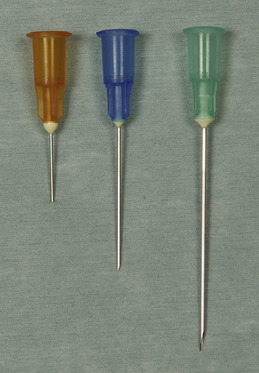CHAPTER 21. SUBCUTANEOUS AND INTRAMUSCULAR INJECTIONS
The Irish physician Francis Rynd (1811–1861) invented the hollow needle in 1844, patented in the Irish patents office. Charles Gabriel Pravaz (1791–1853), a French physician, created the first hypodermic tubular needle and syringe in 1853, made entirely from silver. Soon after, the Scottish physician Alexander Wood (1817–1884) went on to develop a method for subcutaneous injection. Not without an unfortunate sense of irony, the first recorded fatality from an overdose administered by Wood’s invention was that of his wife who had become addicted to intravenous morphine.
INTRODUCTION
Subcutaneous and intramuscular injections provide routes for medication delivery that do not require intravenous access. This may be advantageous in either an emergency situation (e.g. intramuscular epinephrine) or electively (e.g. subcutaneous insulin).
INDICATIONS
CONTRAINDICATIONS
• Local contraindications to injection include:
— cellulitis
— haematoma
— lipoatrophy
— lipohypertrophy
— lymphoedema.
• Bleeding diatheses – coagulopathy or thrombocytopaenia may increase the risk of subcutaneous or intramuscular haematoma formation.
• Lack of consent.
 Tip Box
Tip BoxUnder common law intramuscular sedation in the acutely confused patient does not require the patient’s consent if:
• the patient lacks capacity and
• the administration of the medication is in the best interests of the patient (and not those of the ward staff!)
This route for delivery of sedative medications does not work instantly, and the need for it should be carefully considered prior to prescription.
EQUIPMENT
• Gloves.
• Sterile hypodermic needles (Fig. 21.1):
— 25 gauge needle (orange: length 16 mm, inner diameter 0.241 mm) for subcutaneous delivery
— 21 gauge (green: length 40 mm, inner diameter 0.495 mm) to 23 gauge needle (blue: length 30 mm, inner diameter 0.318 mm) for intramuscular delivery
— 21 gauge needle for drawing up the drug.
• Syringe (of required volume for the medication +/– volume of dilutant required to reconstitute the medication).
• Sterile alcohol swabs.
Stay updated, free articles. Join our Telegram channel

Full access? Get Clinical Tree



